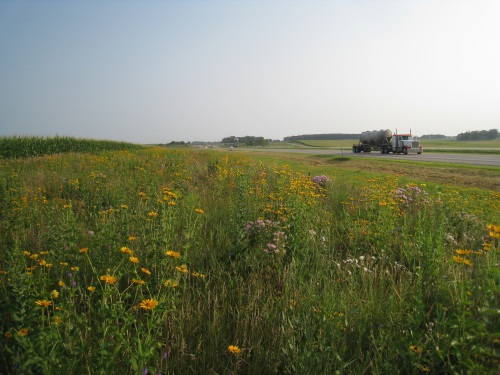In this episode of the Environmental Technical Assistance Program or ETAP Podcast, Jessica Oh – strategic partnerships director in the sustainability and public health office within the Minnesota Department of Transportation – discusses the “next generation highway” her agency is studying.
[Above photo by Minnesota DOT]
The Ray and consulting firm NGI released the NextGen Highways Feasibility Study for the Minnesota DOT in April; a study that examined strategies for “co-locating” electric and communications infrastructure in highway right-of-ways or ROWs.
The study focused on the potential deployment of buried, high-voltage/direct current or HVDC transmission lines within Minnesota interstate and highway ROWs – an effort that offers broader implications for highway ROW strategies in other states.
In April 2021, the Federal Highway Administration released guidance clarifying the highway ROW “can be leveraged by state DOTs for pressing public needs relating to climate change, equitable communications access, and energy reliability.”
Projects listed include renewable energy generation, electrical transmission and distribution projects, broadband projects, vegetation management, inductive charging in travel lanes, and alternative fueling facilities, among others.
“At the heart of this study is the need to examine the energy transmission infrastructure we will need in order to electrify our transportation network; part of a broader effort to decarbonize the U.S. economy,” Oh explained during the podcast.
“The concept we’re evaluating looked specifically at burying [electric power] transmission lines in the highway ROW,” she noted. “Only three states allow for that now. Yet the use of existing distributed ROW could contain the visual impact of expanding our electric grid while lessening the need to acquire more land to support more transmission.”
Building transmission capacity in existing highway ROW could also reduce project-siting timelines by seven to 10 years, Oh added, while reducing the need to work with hundreds of landowners on a project down to dealing with a single state department of transportation.
“There is a great benefit for communities if they allow transmission capacity to be built in the highway ROW,” she emphasized.
To listen to the full podcast, click here.

